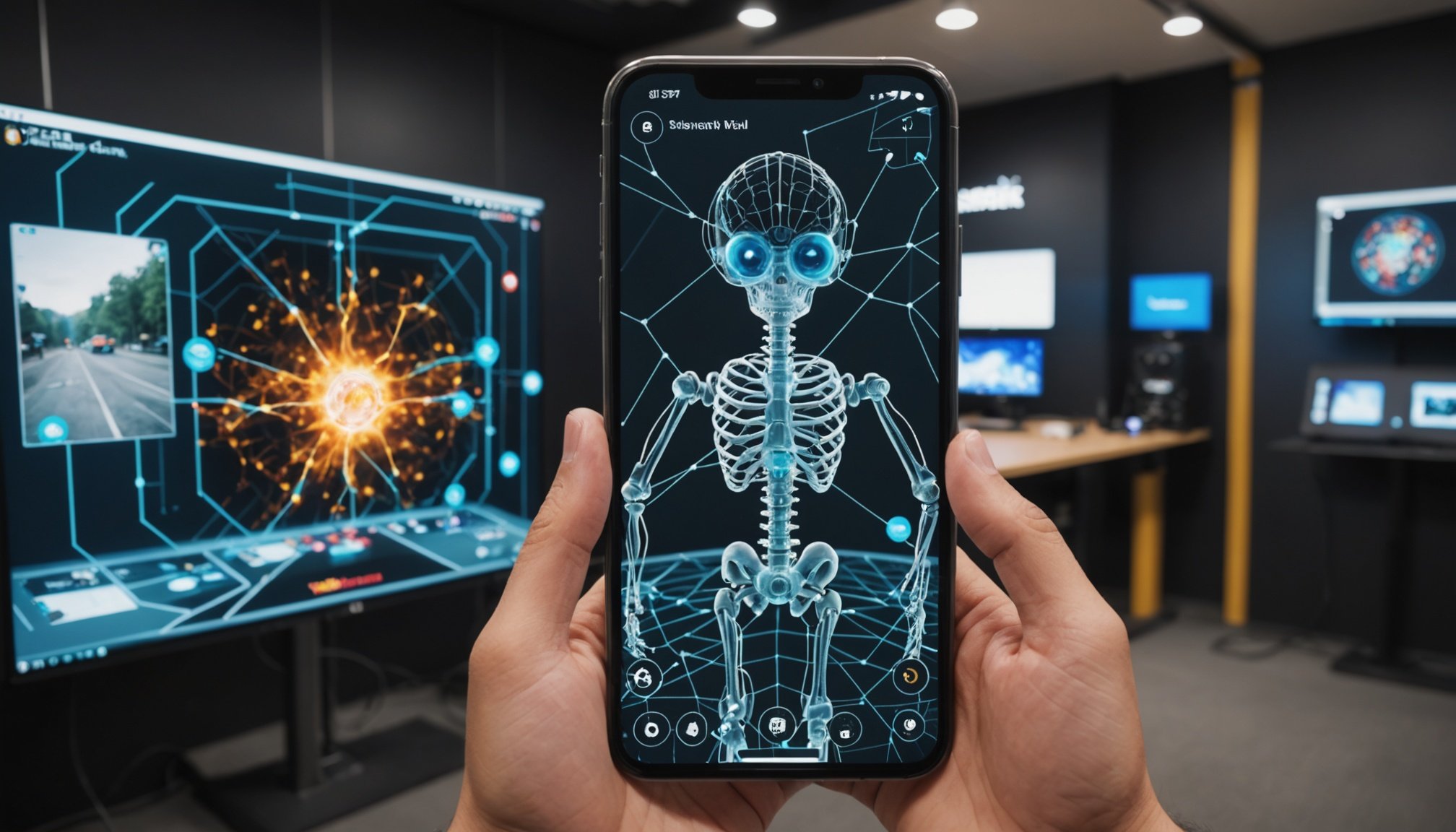Understanding Neural Networks in Real-Time Object Recognition
Neural networks are the backbone of object recognition systems, mimicking the human brain’s ability to identify and classify objects. They consist of layers of interconnected nodes, or neurons, that process data input, learning from patterns to generate accurate predictions. Common architectures include Convolutional Neural Networks (CNNs), which excel in image and object recognition tasks due to their ability to identify spatial hierarchies.
Real-time processing is crucial in applications like augmented reality, where swift and accurate interaction with the environment is vital. By leveraging neural networks, these systems can promptly detect and classify objects, enabling seamless integration of digital components with the real world. The speed of this process relies heavily on the efficiency and optimisation of neural networks to minimise latency.
Also read : Unlocking lush forest landscapes: essential techniques for crafting immersive exploration games
A neural network distinguishes between different objects by identifying unique features and patterns. Each layer in a network focuses on specific aspects, such as edges or textures, compiling this information to form a comprehensive understanding. This hierarchical processing allows networks to generalise across different objects while maintaining precision. Thus, neural networks play an integral role in real-time and efficient object recognition, significantly enhancing the capabilities of modern technology like augmented reality.
Case Studies of Neural Network Implementation in AR Gaming
Exploring case studies of how neural networks elevate augmented reality (AR) gaming uncovers fascinating insights into these gaming applications.
Also read : Mastering multiplayer dynamics: navigating key hurdles in developing next-gen vr experiences
Popular AR Games Utilizing Neural Networks
Several popular AR games, like “Pokémon GO” and “Harry Potter: Wizards Unite,” utilize neural networks to enhance player experience. By employing image recognition and location-based services, these games create immersive environments that seem to blend seamlessly with the real world. Neural networks are crucial in interpreting and processing the vast amounts of data required to provide such an experience.
Success Stories and Metrics
The integration of neural networks in AR gaming has led to significant success stories. Notably, games have reported substantial increases in player engagement, with some titles maintaining active user bases of millions. Metrics indicate that these augmentations improve not only the longevity of player interest but also their overall satisfaction. Such advancements highlight the pivotal role neural networks play in fostering a dynamic gaming environment.
Technical Innovations in Game Development
Innovative techniques, like real-time data processing and adaptive learning algorithms, have been instrumental in game development. By incorporating neural networks, developers have successfully pushed the boundaries of what’s possible in gaming. These technical innovations enable games to offer personalized experiences, responding to user inputs with high precision and adaptability, making them a cornerstone of modern AR gaming evolution.
Methodologies for Implementing Object Recognition
To create a seamless AR game development experience, understanding implementation methodologies is crucial. The process begins with integrating neural networks, which serve as the backbone of object recognition. Neural networks need training with vast datasets to accurately identify and track objects within augmented reality environments. This involves selecting the right model architecture, such as convolutional neural networks (CNNs), suited for image recognition tasks.
Once the neural network is set, developers can turn to various tools and frameworks. Popular options include TensorFlow or PyTorch, both of which offer extensive libraries and support for building robust object tracking systems. These frameworks allow developers to utilize pre-built models or customize their own, depending on the complexity of the application.
During the implementation phase, several challenges could arise. Developers might face issues such as insufficient training data or computational resource constraints. Real-time processing demands can also strain system capabilities, impacting game performance. Developers need to optimize their models and manage resources efficiently to ensure smooth operation.
Increased understanding and careful planning can overcome these hurdles, resulting in an AR game with effective object recognition capabilities.
Challenges in Real-Time Object Recognition
Real-time object recognition, especially in gaming technology, presents a unique set of challenges. As this technology evolves, addressing these issues becomes crucial.
Technical Limitations
Real-time object recognition faces several technical limitations, primarily due to latency and recognition accuracy. Latency can significantly affect gameplay, causing disruptions that impact the user’s experience. Ensuring minimal delay requires sophisticated algorithms and high-performance hardware to process data quickly and accurately. Moreover, maintaining high recognition accuracy is essential for seamless gameplay, as incorrect object recognition can lead to frustrating in-game errors.
Data Privacy and Security Concerns
Incorporating real-time object recognition into gaming technology raises ethical concerns regarding user data privacy and security. As games analyze surroundings and collect data, protecting this information becomes imperative. Developers must establish robust security protocols to prevent unauthorized access and misuse of sensitive data, ensuring players’ trust remains intact. Ethical considerations surrounding data use should always be prioritized.
Performance Issues and Solutions
Performance optimization is vital for enhancing real-time object recognition in gaming. Latency and recognition accuracy can be improved through various strategies, such as optimizing software, upgrading hardware, and employing machine learning. Additionally, advanced algorithms and cloud-based processing can significantly enhance performance. Efforts should focus on balancing accuracy with minimal latency to offer an engaging and responsive user experience.
Impact of Neural Networks on User Experience
Incorporating neural networks into user experience design has transformed how users interact with technology. The enhanced recognition capabilities these networks offer significantly improve user engagement in interactive environments like games. For example, sophisticated pattern recognition in games adapts to players’ actions, creating more immersive experiences. These enhanced recognitions not only heighten user engagement but also cater to individual preferences, making interactions more personal and exciting.
User interface considerations for Augmented Reality (AR) also benefit greatly from neural networks. These networks enable more intuitive and responsive interfaces, allowing for seamless interaction with virtual elements. As neural networks become more integrated, AR designers focus heavily on ensuring that interactions are natural and intuitive, enhancing overall user satisfaction.
Looking towards the future, technology trends are steering towards more immersive gaming experiences that fully integrate neural networks for real-time adaptability and improved realism. We are witnessing a trend where interaction design is no longer static; it evolves through feedback and neural adaptations. This continual feedback loop between users and machines points towards a future where user experiences are not only more engaging but also continuously refined based on user behavior and preferences.
Future Trends in AI and AR Gaming
Delving into future trends within AI and AR gaming, several fascinating advancements are on the horizon. This dynamic field promises significant transformation in how games are played and experienced.
Emerging Technologies in Neural Networks
The emergence of sophisticated neural networks is revolutionising gaming. These networks facilitate real-time analysis and adaptation, enhancing gameplay experiences. By simulating human-like decision-making, games become more unpredictable and engaging. This trend is crucial, as it underscores how artificial intelligence can enrich virtual environments, making them more immersive and interactive.
Long-term Implications for Game Development
Future trends suggest that AI advancements will redefine game development. Developers will likely utilise AI to create responsive game worlds, where environments and characters adjust to players’ actions. This responsiveness will make narratives more dynamic and personalised, potentially increasing user satisfaction and loyalty. Such innovations could also lower development costs by automating repetitive tasks.
Predictions for the Next Decade in AR Gaming
The next decade will see augmented reality take centre stage. Predictions highlight a shift towards more realistic and personal gaming experiences. As AR technology improves, integrating physical and virtual worlds seamlessly could result in unprecedented levels of interactivity. Players might explore virtual universes layered over their real-world environment, fostering a new dimension of engagement and exploration.






